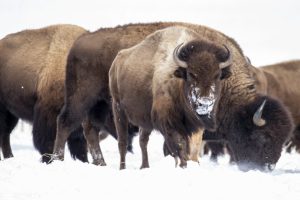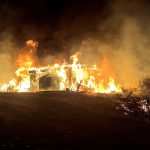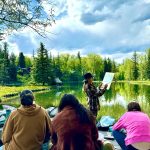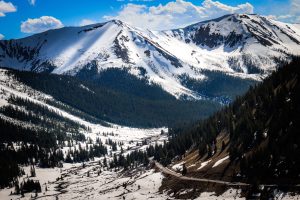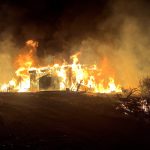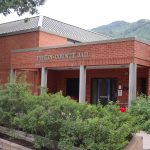Colorado Parks and Wildlife takes first steps toward managing bison as wildlife
Per a new state law, bison can now be classified as either wildlife or livestock in Colorado
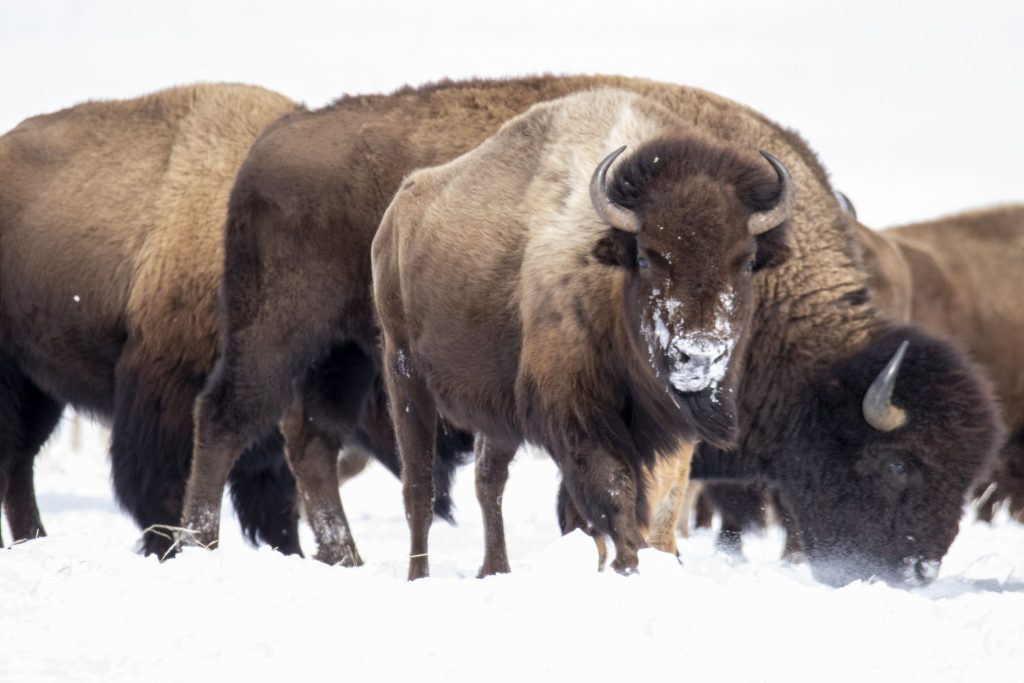
Kari Cieszkiewicz, U.S. Fish and Wildlife Service/Courtesy Photo
Colorado Parks and Wildlife has begun implementation of a new law aimed at protecting wild bison that migrate to Colorado.
The law — which originated as a priority bill in the American Indian Affairs Interim Study Committee this year — allows bison to be classified as either wildlife or livestock, requiring Parks and Wildlife to develop a plan for those that fall under the former. This dual classification mirrors several other Western states including Utah, Montana, Arizona, New Mexico and Wyoming.
“It’s an important step in efforts to restore this valued native wildlife species on the landscape, particularly for Native American people who have deep cultural, spiritual and nutritional value for bison,” said Nick Gevock, the Northern Rockies wildlands and wildlife campaign organizer for the Sierra Club, at the Oct. 9 Parks and Wildlife Commission meeting.
Currently, bison only exist as livestock in Colorado, and prior to the law, they could only be managed as such.
The last of the state’s wild bison were killed in South Park in 1897 as part of the systematic slaughter of the animals across the West in the 1800s, which saw populations fall from an estimated 60 to 80 million to a few hundred animals by 1889, according to the U.S. Fish and Wildlife.
Each year, however, there are wild bison from Utah’s Book Cliffs herds — which are estimated at just under 600 animals — that wander across the border into Colorado just northwest of Grand Junction.
In Colorado, prior to the new law, the animals lost any protections and were typically killed. Parks and Wildlife reported on Thursday that in the past 10 years, a dozen bison have been hunted in Colorado after leaving Utah. It estimates that 25 have been killed in the past 20 years.
Now, Parks and Wildlife will develop a toolset to help protect these wild bison once they enter Colorado.
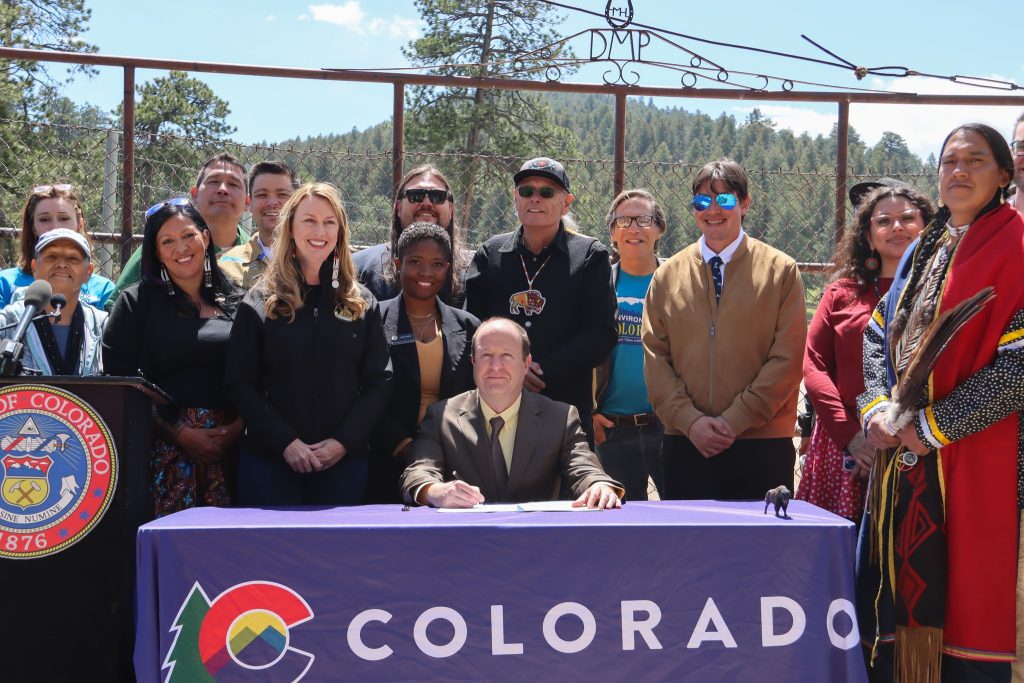
How Colorado Parks and Wildlife will manage wild bison
At its most recent commission meeting, the state wildlife agency initiated the process to implement the law, which requires the development of a bison management plan and a few statutory changes.
Andy Holland, Parks and Wildlife’s big game manager, said the agency is preparing to launch a stakeholder process and develop the Book Cliffs Herd Management Plan over the next 18 months.
“This plan will determine a bison management area and a population objective range that will guide future bison regulations concerning wild bison management,” Holland said. “This bison management plan and the population objective range will consider agricultural damage, disease concerns, as well as range conditions and forage competition with wild bison and livestock and other wildlife.”
This process will include range habitat assessments and comprehensive tribal engagement, Holland added.
On Thursday, Oct. 9, the agency held the first of two rulemaking hearings to make the necessary regulatory changes for the agency to manage bison in Colorado. According to Hilary Hernandez, Parks and Wildlife’s regulations Manager, this included changes in three core areas:
- To differentiate between wild bison, which will be designated as big game, and domestic bison
- Outline a framework for the potential hunting of wild bison to protect against disease or property damage
- Cover compensation for damages caused by wild bison
Parks and Wildlife will hold its second and final hearing to adopt the changes at its November commission meeting.
At this point, these regulatory changes are proactive and refer to situations that the state could be a long way from dealing with. Instead, however, they grant Parks and Wildlife authority to address issues like property damage or prevent the spread of disease from wild bison to livestock. To the latter, Holland noted that there are no current disease concerns with the Utah bison herds, adding that they are routinely tested for Brucellosis and Mycoplasma bovis.
At Thursday’s meeting, several public commenters encouraged the agency not to allow any hunting of bison.
Adam Kreger, the staff attorney at animal rights advocacy organization Friends of Animals, said that authorizing bison hunting would be a “step backward,” not only because there are alternative management tools, but also because it would “undermine decades of conservation progress.”
“We can’t ignore history,” Kreger said. “As the language of the bill makes very clear, bison were driven to near extinction precisely because of hunting, an ecological and moral failure that our nation has spent generations trying to correct. To once again allow the hunting of bison, which is our national mammal and a keystone of the Plains, would be inconsistent with the values of restoration, stewardship and respect for wildlife that Colorado has long championed.”
Other commenters — including Gevock and Mark Surls, representing the Colorado Wildlife Alliance — simply urged the agency to ban hunting until certain population objectives are met.
Brian Dreher, assistant director of the terrestrial branch at Parks and Wildlife, said that the proposed regulations are simply an initial step that puts a framework in place for future hunts.
“We don’t have any intentions to hunt these animals in the near term, but we also need some flexibility to deal with any issues that arise,” Dreher said. “I think that these regulations allow us that.”
Any future bison hunting, Holland later said, would be as “carefully regulated” as all big game hunting opportunities in Colorado.
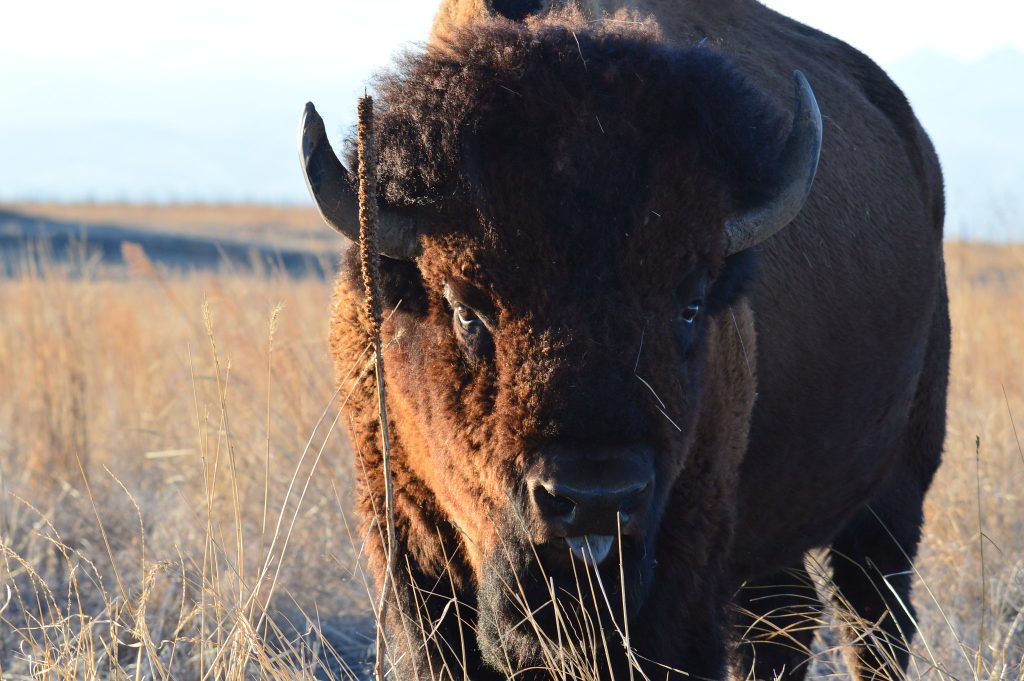
A step toward amends and bison restoration
While the bill originated as a way to protect the wild bison migrating to Colorado from Utah, it also represents “a step toward making amends for the attempted genocide of American Indians through the eradication of their food source, the bison,” according to the law text.
People of the Sacred Land — an organization formed to document the history of Native tribes in Colorado, preserve their culture and advocate for reconciliation and reparation — released three reports in partnership with the Truth, Restoration and Education Commission of Colorado in 2024 that examine the history of Native peoples in Colorado. The reports look at the forced relocation of Native peoples, illegal seizure of land, violations of human rights, and grants recommendations for restoration, reparations and reconciliation efforts.
One of the issues evaluated was the eradication of Colorado’s buffalo herds. The “Historic Economic Loss Assessment” reports that the killing of buffalo was “instrumental in the colonization of the Native peoples of the Great Plains,” and not only had negative consequences in the past, but also in present-day Native communities.
“Native Americans who belong to bison-reliant nations are less likely to be self-employed or to own their own homes,” the loss assessment states. “Bison-reliant nations have fewer people who have college degrees proportionally, and more of them live on Native homelands whose size has been reduced to a fraction of their original areas.”
The law indicates that allowing for bison to be classified as wildlife in Colorado is a way to “protect, serve and honor the enduring bond between bison and American Indians and Tribal Nations.”
While the law does not itself plot a reintroduction or restoration effort of bison, it is also a step in that direction should Colorado look to do so in the future.

